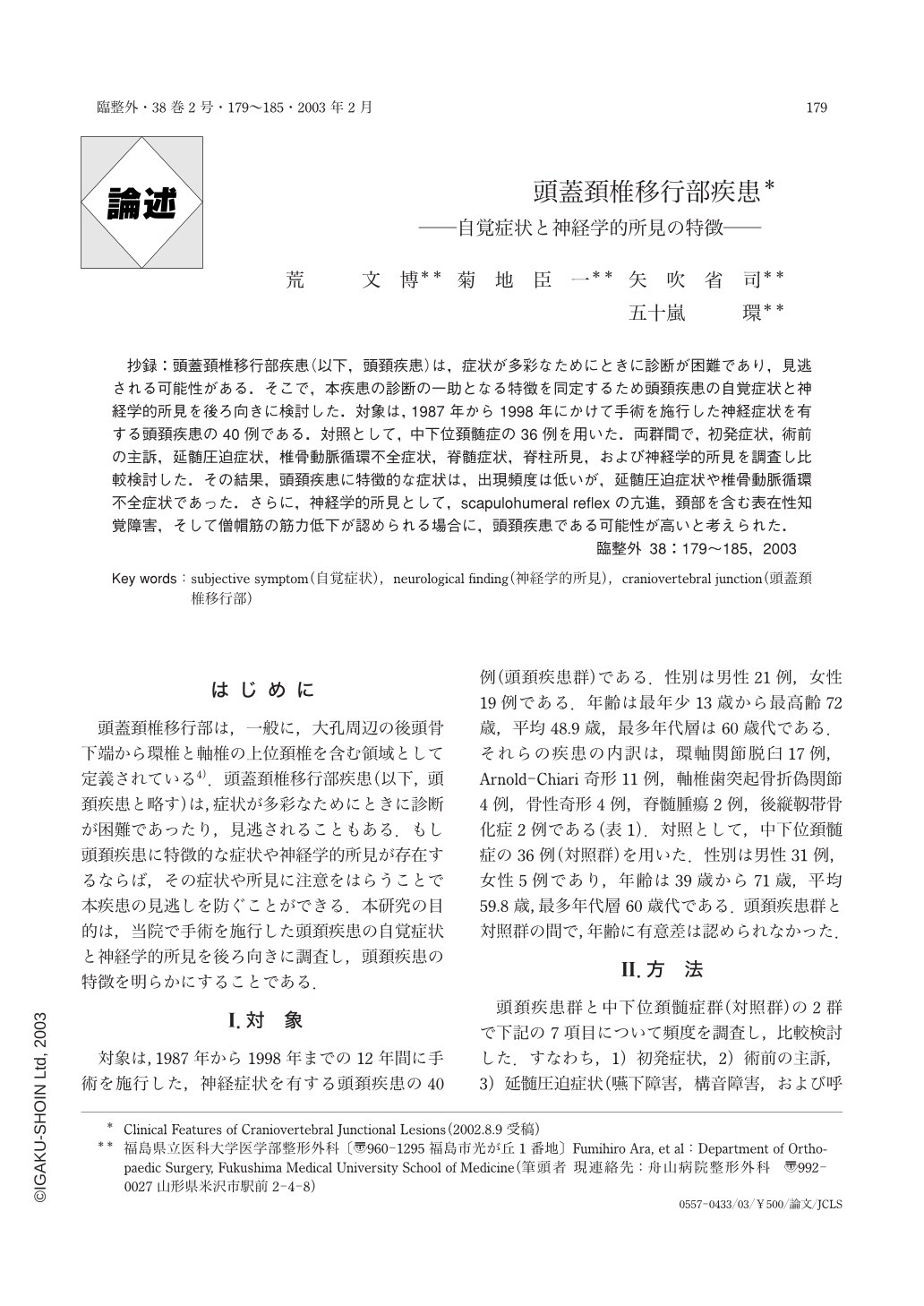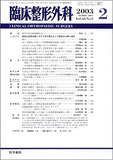Japanese
English
- 有料閲覧
- Abstract 文献概要
- 1ページ目 Look Inside
抄録:頭蓋頚椎移行部疾患(以下,頭頚疾患)は,症状が多彩なためにときに診断が困難であり,見逃される可能性がある.そこで,本疾患の診断の一助となる特徴を同定するため頭頚疾患の自覚症状と神経学的所見を後ろ向きに検討した.対象は,1987年から1998年にかけて手術を施行した神経症状を有する頭頚疾患の40例である.対照として,中下位頚髄症の36例を用いた.両群間で,初発症状,術前の主訴,延髄圧迫症状,椎骨動脈循環不全症状,脊髄症状,脊柱所見,および神経学的所見を調査し比較検討した.その結果,頭頚疾患に特徴的な症状は,出現頻度は低いが,延髄圧迫症状や椎骨動脈循環不全症状であった.さらに,神経学的所見として,scapulohumeral reflexの亢進,頚部を含む表在性知覚障害,そして僧帽筋の筋力低下が認められる場合に,頭頚疾患である可能性が高いと考えられた.
Diagnosing craniovertebral junction lesions is sometimes difficult, since the lesions give rise to a wide variety of symptoms. The purpose of the current study was to identify the characteristics of the subjective symptoms and neurological findings that are of help in making the diagnosis of craniovertebral junction lesions. All of the patients in this study had undergone surgery between 1987 and 1998, and 36 patients with middle or lower cervical myelopathy served as controls. The incidence of initial symptoms, chief complaints, symptoms of medulla oblongata compression, symptoms of vertebral artery circulatory insufficiency, and neurological findings of craniovertebral junction lesions were compared with the control group. The result showed that the charactereristic symptoms were symptoms for the medulla oblongata compression, symptoms for circulatory insufficiency of the vertebral artery. However, these frequencies were very low. An increased scapulohumeral reflex, dysesthesia including the neck area and weakness of the trapezius muscle were characteristic neurological findings suggestive of craniovertebral junction lesions. The most important factor in the diagnosis of craniovertebral junction lesions maybe including craniovertebral junction lesions as one of the different diagnose when a patient presents with symptoms of cervical myelopathy.

Copyright © 2003, Igaku-Shoin Ltd. All rights reserved.


